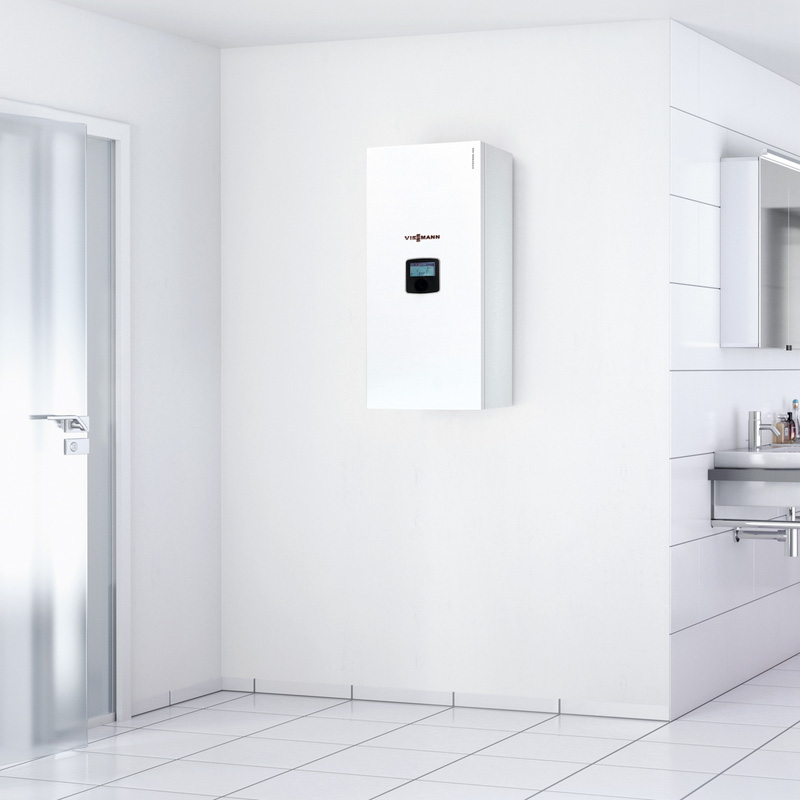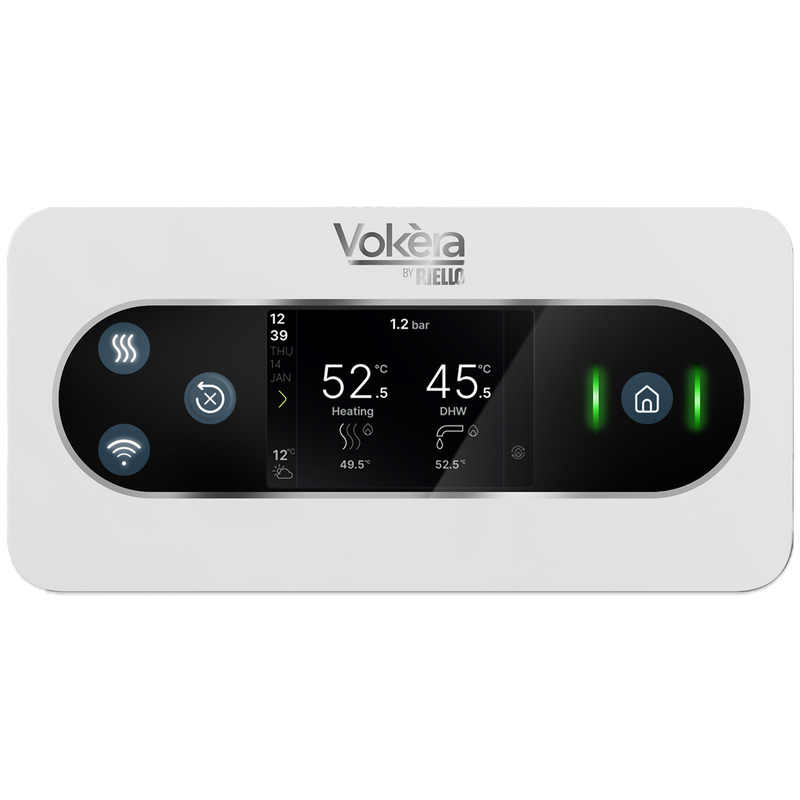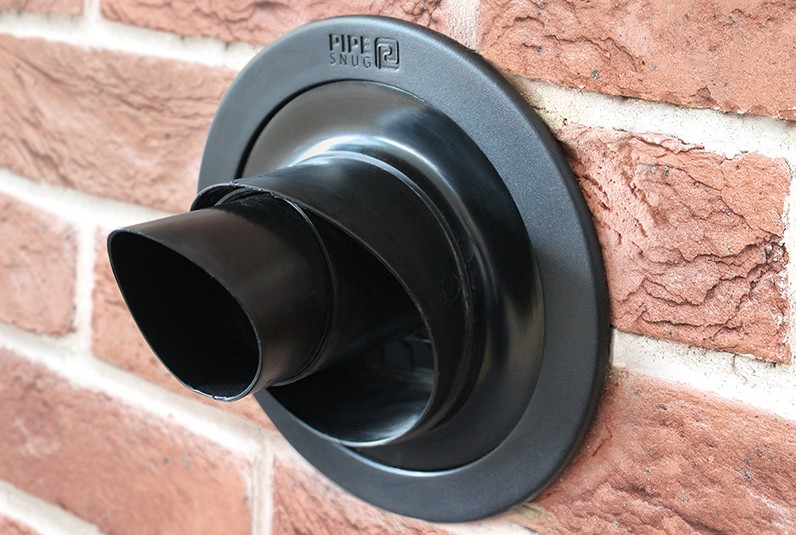There are several reasons why you may want to adjust the water temperature of your boiler. Perhaps you’re looking to save energy or you want to change the heating level in your home so that it’s more to your liking. In most cases, setting the water temperature of your boiler is a quick and straightforward process. That said, it does depend on the type of boiler you have as to how it’s done.
In this article, we’ll provide easy-to-follow steps on setting the temperature of your boiler so you can reduce energy consumption and improve the comfort of your home.
What's the difference between the boiler water temperature and thermostat settings?
Oftentimes, people confuse the temperature on their thermostat with that of their boiler, believing them to be the same. However, while they work together, they each serve a different purpose. In simple terms, boiler water temperature refers to the temperature the water is heated to, while the thermostat temperature allows you to control the temperature inside your home.
When you set the temperature of the water inside your boiler you’re essentially controlling how hot the water gets before it flows to your radiators, underfloor heating and taps. This means a higher water temperature can heat your home faster but could also use more energy.
On the other hand, when you adjust the temperature of your thermostat this tells the heating system when to turn on or off, in order to maintain the desired room temperature. When the room temperature drops below the thermostat’s setting, the system activates and begins to circulate the heated water from the boiler and around your radiators to warm the room.
In a nutshell, the boiler temperature controls the water’s heat, while the thermostat manages the room temperature. Setting both at the right levels ensures both comfort and energy efficiency.

How to Adjust the Flow Temperature on a Combi Boiler
Step 1: Identify the Type of Control Panel
Most combi boilers feature either a digital panel with buttons for setting the temperature, or a rotary dial. Once you’ve identified the type of control panel you have, move on to the next step.
If your boiler has a digital panel, move on to step 2. On the other hand, if the control is a manul dial then skip to step 3.
Step 2: For a Digital Control Panel
On the digital panel, look for the display showing either water temperature or settings such as “hot water” or "heating."
Use the "up" and "down" arrows or the "+" and "-" buttons to adjust the temperature.
A common water temperature setting is 60°C for hot water. Once adjusted, wait for a few seconds until the display reflects the changes.
Step 3: For a Manual Dial
You’ll usually find the temperature dial located on the front of the boiler. Rotate the dial to increase or decrease the water temperature.
As with the digital panel, a setting of around 60°C is often recommended for hot water. Sometimes you may need to experiment slightly to find the right temperature that you prefer.
Step 4: Test the Water Temperature
After adjusting, test the hot water from a tap to ensure it's at the desired temperature.
Keep in mind that it can take a little time before the water gets up to temperature and this usually depends on the type and size of your boiler. Expect to wait from a few minutes to about an hour.
Step 5: Save the Settings
Once you’ve set the temperature, don’t forget to save the settings if necessary.
For digital panels, some models will automatically save the settings for you. For manual dials, the setting should be retained, but make sure not to bump or turn the dial accidentally. If in doubt, refer to the boiler manual.
How to Adjust the Flow Temperature on a System Boiler
Step 1: Locate the Cylinder Thermostat
Adjusting the water temperature on a system boiler differs from a combi boiler because the temperature is controlled through the hot water cylinder, rather than the boiler.
The hot water cylinder stores the water before it's delivered to taps throughout your home. It usually has either a manual dial or a digital control, often located on the side of the cylinder.
Step 2: Adjust the Temperature
If your hot water cylinder has a manual dial simply turn it to the desired temperature, anywhere from 60°C to 65°C is ideal for hot water. This is considered the optimal range for both safety and energy efficiency.
On the other hand, for digital controls, use the up/down arrows or "+" and "-" buttons to increase or decrease the temperature as you prefer.
Step 3: Check the Temperature
After adjusting, run the hot water from a tap or shower to ensure it reaches your preferred temperature.
As with a combination boiler, allow for enough time so that the water can get up to temperature.
The Benefits of Reducing the Water Flow Temperature on Your Boiler
Improved Energy Efficiency
When you reduce the flow temperature, this means that your boiler doesn't need to work as hard to heat the water. This can result in less gas or electricity being used which may contribute to lower energy bills.
Safer Operation
Lowering the water temperature can reduce the risk of scalding accidents, especially if you have young children in the home. The water at the taps, or in radiators, will not get too hot, which can help to prevent burns and improve safety.
Increased Boiler Lifespan
Running a boiler at a lower temperature reduces wear and tear on the internal components, which can help to extend its lifespan. What's more, lower temperatures mean less thermal stress on the system, which can reduce the likelihood of a boiler breakdown.
Reduced Carbon Footprint
For those of you who are energy concious, using less energy to heat water means you can lower your carbon emissions. This is an important step toward reducing your household’s environmental impact and supporting sustainability.
Cost Savings on Heating Bills
Lowering the flow temperature to around 60°C (rather than 75°C or higher) may reduce your heating bills. Because the boiler runs at a lower temperature, it uses less gas or electricity, which could add up over time.
Prevention of Limescale
Lower flow temperatures can help prevent the buildup of limescale inside your boiler, especially in areas with hard water. When a boiler runs at higher temperatures, it can encourage the formation of limescale, which may reduce efficiency and lead to costly repairs.



